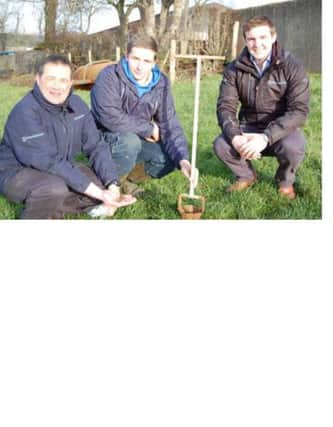Getting your soil to deliver its potential


Northern Ireland has an enormous competitive advantage on global markets for dairy, beef and sheep products due to our potential to grow high quantities of highly nutritious grass.
This is reflected at farm level by the consistent and convincing message that the more feed (i.e. forage in the form of grass) that can be grown and utilised within the farm-gate, the more profitable and sustainable the farming system.
Advertisement
Hide AdAdvertisement
Hide AdThe more grass that can be grown and utilised within the farm-gate, the more profitable the sustainable the farming system.
Good Soil Fertility is critical
Soil management is a key factor that will determine the farm’s potential to grow grass. In any year, weather is obviously critical.
There will be good years and bad years when grass production on all farms will vary upwards or downwards. However, what will be consistent year on year is that well managed fields with fertile soils will perform best.
Farmers are at the mercy of the weather, but do have control over the management and fertility of their soils. It is essential that soil is fertilised and managed so that it is in the right condition to give the grass whatever it needs whenever the weather comes for good growth.
The Basics are essential
Advertisement
Hide AdAdvertisement
Hide AdThinking about managing soil fertility in a simple step-wise approach has been well developed by all researchers through the five steps of soil fertility management approach. Setting targets for the farm based on these steps is important.
Soil is critical. It needs to be in the right condition to allow grass capitalise on good weather for growth whenever it comes.
Assess the Programme
Doing the same thing with the same fertiliser products year on year just because it is what you have always done, won’t improve the grass production potential of the farm, if those products are not right for your individual farm situation. Approximately 20% of the total variable costs on most farms are spent on fertilisers.
Making sure this money is spent on the right products to suit your soils and your farm, and applying them at the right rates and times, is vital to ensuring that this money yields a return in productivity and profit. Properly fertilised soils will give results.
Soil Fertility Targets that every farm should aim for:
- Soil sample results for the whole farm
- Soil pH > 6.0 in every field
- Soil P and K levels in Index 3 in every field
- Apply slurry to maximise its fertiliser value
Advertisement
Hide AdAdvertisement
Hide Ad- Use the right fertilisers to balance the overall nutrient supply. Major nutrients (N, P & K) need to be balanced with all the essential nutrients, including Sulphur (S), Magnesium (Mg), Calcium (Ca) and trace elements where required.
Allow the soil to work for you
Fertiliser on its own won’t grow all the grass you’ll need. In many cases more than half of the total nutrients used by grass come from the soil rather than from direct uptake of applied fertiliser.
Soils contain large total amounts of nutrients. However, soils with low pH, poor biological activity and/or structure and drainage problems will release less of these nutrients to plants for uptake. In these soils, more nutrients just get either locked up or lost completely to water or air. You are losing grass growth potential when this happens.
The response to fertiliser being applied will also be reduced.
You have to do something differently to get a better result
Fertiliser and Soil Fertility Management Options
Advertisement
Hide AdAdvertisement
Hide AdGrassland AGRO offers a range of fertilisers that have enhanced capability over and above standard N &NPK fertilisers. The range includes a number of fertiliser products that combine individual or combinations of technologies that improve soil fertility and nutrient supply to grass and crops.
The products are not a substitute for focussing on the basic fundamental principles of soil pH, soil Index levels and slurry management.
However, in many cases, specific issues arise on farms where standard fertiliser and lime programmes may not be sufficient to deliver the best result possible. An enhanced fertiliser option may work well in this case.
Grassland AGRO’s team of dedicated Agronomy advisors are available to any farmer who wishes to explore these options, and to see how the overall fertilisation programme of the farm might be managed for maximum productivity and return.
Enhanced Fertilisers - What do they do?
Advertisement
Hide AdAdvertisement
Hide AdThe Grassland AGRO range of speciality fertiliser products are based on three principles technologies, namely Soil Conditioners, Phased Released Nitrogen, and Protected Phosphorus.
Advantages of each technology are summarised in the figure shown. The Enhanced Fertiliser range of products includes combinations of these technologies with major and micro nutrients depending on the farm/field conditions. Grassland AGRO’s team of Agronomy specialists are available to discuss how these technologies can be used to improve the grass production and profitability on your farm.